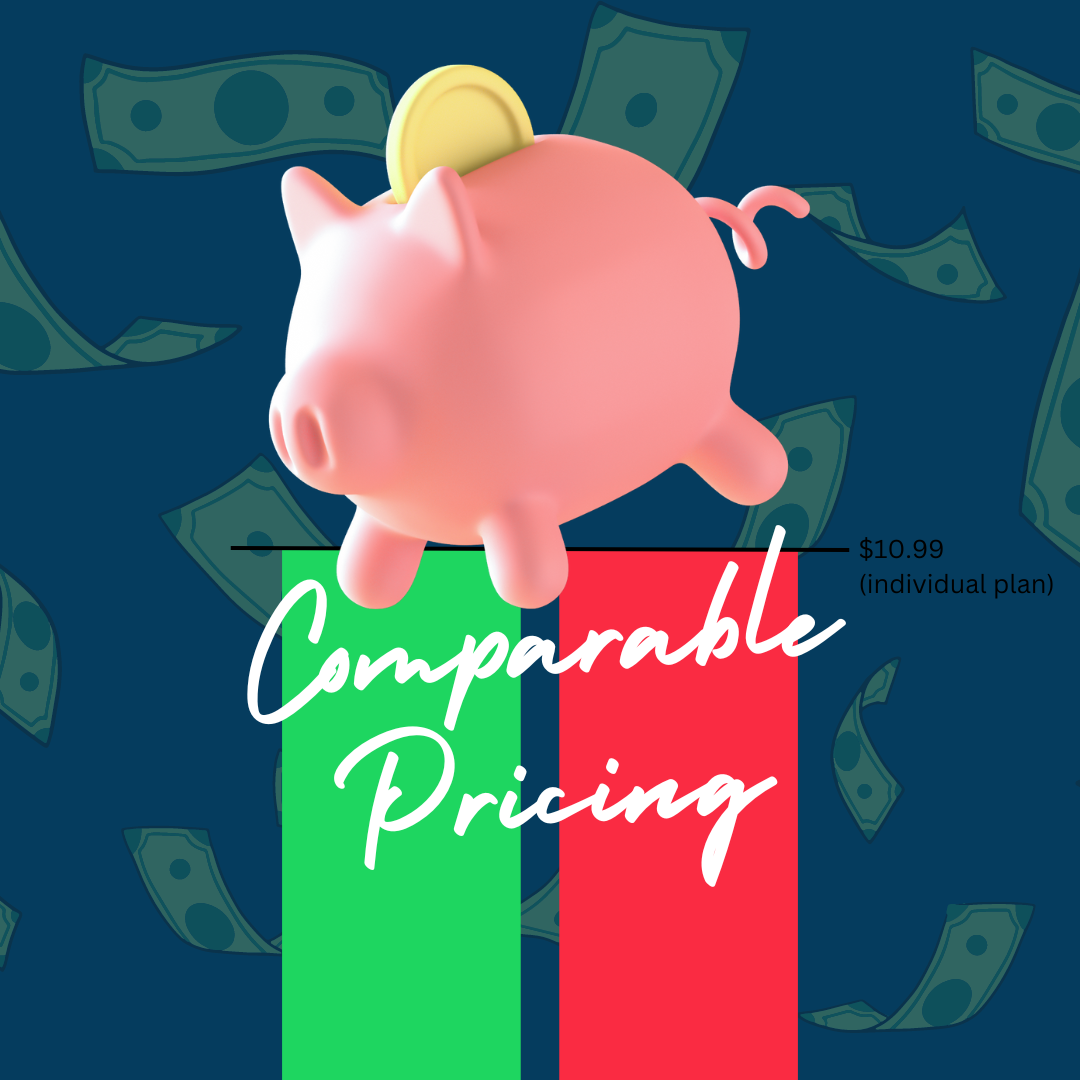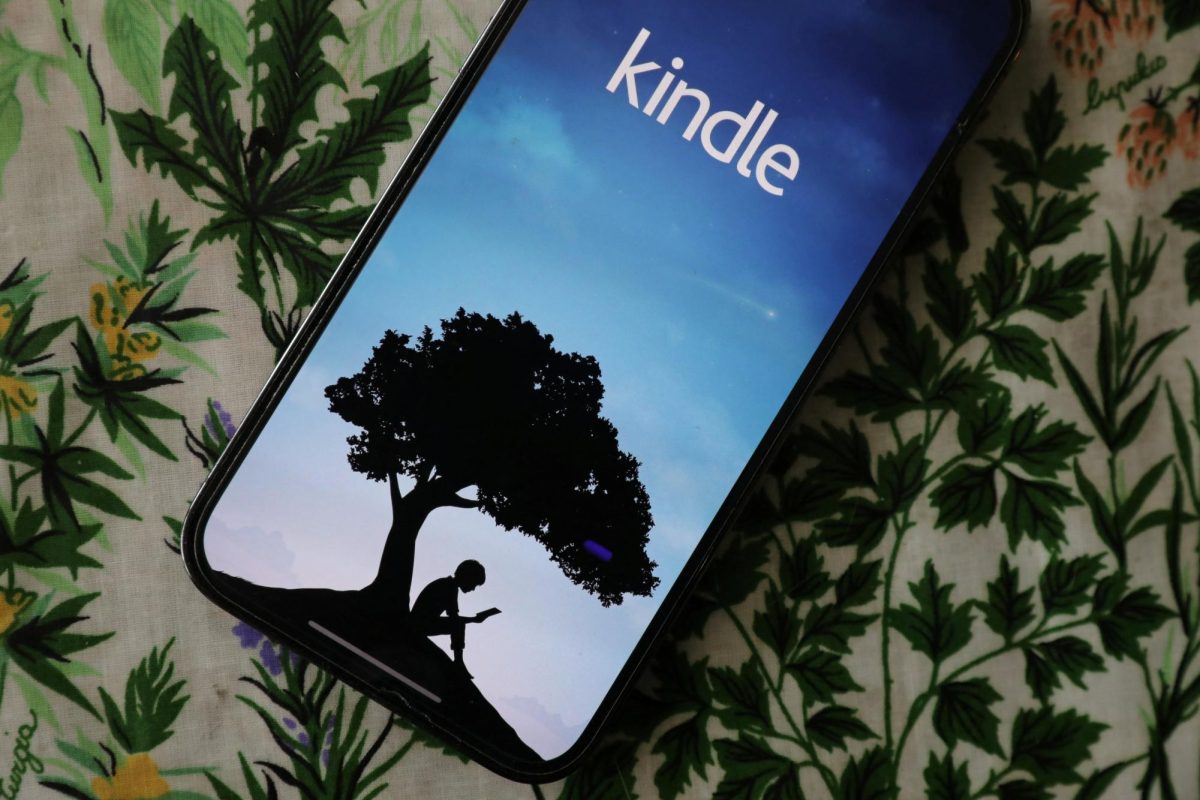![Rivals. Spotify and Apple Music are the most even on the streaming-service playing field. Spotify was officially launched in 2008, and Apple Music in 2015. [Made with Canva]](https://aahsmountainecho.com/wp-content/uploads/2024/04/Spotify-vs-Apple-music.png)
Music is a fundamental part of human life. We’ve grown up hearing nursery rhymes like “Baa Baa Black Sheep” and “Twinkle Twinkle Little Star”. People have been making noise–and therefore music–since the dawn of time. But as society progressed and our world turned increasingly toward the shining face of technology, music and technology have become irrevocably intertwined.
The product of this entanglement is one we all know very well: streaming services.
While people have been “streaming” music in one way or another for as long as there was music to “stream”, whether that was paying the local bard a shilling to play the loot, or making your own personalized mixes by recording songs on the radio, the industry didn’t truly take off until the birth of Spotify.
The app was launched in late 2008, almost instantly revolutionizing the industry. And with earlier streaming apps like Pandora put on the world’s back burner, other companies quickly moved in to fill the space. Apple launched Apple Music in 2015, followed by YouTube Music a few months later.
Though there were, and still are, many more music streaming services throughout the world, the seats for the two most popular arguably belong to Spotify and Apple Music.
Spotify currently has an estimated number of users of over 602 million, and Apple Music with around 88 million users. It’s clear that Spotify holds the title for most used, but does that mean it is the better of the two?

When deciding on purchasing anything, not just a subscription to a streaming service, the place most people first look is the cost. One major similarity between Spotify and Apple Music is simple: a tiered system of options for pricing.
Spotify
While Spotify has a free version, no one likes their music experience to be interrupted with ads. Especially when they’re usually the same ads over and over again. Most people prefer the premium option, free of all ads and distractions.
Unfortunately, to have the best you have to be willing to pay the price.
$10.99 per month.
Unless you happen to be in college. In that case, you may be able to qualify for their student plan, which cuts the cost in half ($5.99 per month).
But what if you’re a middle-aged man living with his sister? In that case, consider the Duo plan: a two-person version of premium selling for $14.99 a month. It may drain your already pathetic bank account, but at least it will keep you and your sister from killing each other.
Meanwhile, if you’re a single mom who works two jobs, then you can look into the family plan, for $16.99 a month.
Apple Music
Like most streaming services, Apple Music has a tier system for different payment plans. There are four different tiers of varying cost, all of which unlock all of the features of the app. Unlike many streaming platforms, Apple Music has no option for free streaming.
The first, cheapest plan is the student plan. For $5.99 a month, users have access to the app. However, the student plan can only be used for up to 48 months. To qualify for a student plan, users must be attending a college or university that offers degrees or an equivalent to a degree, and they must be a new subscriber to Apple Music. Users must use their student ID and have access to a school email to verify their status as a student.
The next plan is the individual plan at $10.99 per month. The individual plan is for anyone and has no time limit or list of qualifications. Another plan offered is the yearly plan, which can only be used as an annual subscription to the individual plan. The yearly plan is offered at $99 per year, but is only available for individuals; there is no yearly plan offered for student or family plans.
The fourth and final plan option is the family plan. For $16.99 per month, up to six different users can enjoy the platform. The users within the family plan can also access any songs which have been purchased by one of the family members in iTunes.

A good first impression is one of the most valuable parts of meeting someone, and that’s true about apps, too. After all, if an app isn’t easy to use and get the hang of, most will end up put off and won’t find using the app to be worth their time. An app which is easy to use, has desirable features, and is attractive to the eye is one which people will most want to use.
Spotify
As with pretty much any streaming app out there, upon opening it, Spotify greets the user with a home screen. The Spotify home screen is unique in a couple of ways; it not only holds your personal playlists and recently listened to, but also playlists, albums and podcasts that you may like based on your listening preferences. With Spotify, you also have the option to like songs. Liked songs automatically go to your “liked songs” playlist that Spotify creates on its own, and you can even see what month and year in which you liked the song.
Within the home screen, there is also a gateway to the user’s library. This is where playlists they’ve created, liked or saved stay, along with the formerly mentioned “liked songs” playlist. You can also add different artists to your library, which will allow Spotify to let you know when their new releases occur.
Searching with Spotify is probably its best attribute. If you can’t recall the name of a song, you can search by picture, or you can even type their lyrics right into the search bar. There is also a helpful “recent search” list in case you ever want to go back for more. You can search for more than songs and albums too; you can actually search specific moods or situations to get the playlist you want. For example, the “Daily Drive” playlist or the “Happy” mix.
Another useful home feature is the listening history, which allows you to to view the songs, albums, and playlists that you listened to any time from this morning to months ago. Near this feature are buttons with which you can also access your profile and adjust it if desired.
Apple Music
New users to Apple Music will find that the app is fairly easy to navigate, especially for basic features. The main feature used to navigate the app is the bottom bar, which can direct users to the home page, browse page, radio page, the user’s library and the search.
On the home page, users will find their recent listens alongside recommended artists, songs, playlists and stations. At the bottom of the page, users can also find their yearly Replay and anything that has been shared with them.
The browse page features different popular artists and albums, playlists curated by Apple, and recommended music. The page also has a few popular radio shows, though radio shows can be better accessed in the radio page.
Under the radio tab, users can find different radio stations and radio shows. Apple Music has two different categories of stations. Some of the stations are curated based on the user, such as the “[User’s name] Station,” which features some songs which are frequently played by the user, songs that they used to listen to but don’t so much anymore and some new songs which may interest the user. Another station which they promote is the “Discovery Station” which is made up entirely of songs not in the user’s library, but that are similar to what they typically listen to. The other category of stations on Apple Music are artist based stations. They are all titled like “[Artist] & Similar Artists Station.” Most popular artists and some smaller artists have a station, and they are based on the listening habits of people who listen to a lot of the artist which the station is named for.
The radio tab also features music based radio shows. These include shows made by Apple and hosted by artists, such as Dolly Parton’s “What Would Dolly Do?” Radio, and shows by Apple, such as the “New Music Daily” radio show.
Moving along, users can visit their library. The library page has six tabs which sort songs the user has added to their library (artists, albums, songs, genres, compilations and composers), a tab for user made playlists (playlists), playlists made by Apple for the individual (made for you), music videos which a user has added to their library (music videos) and a tab for songs which the user has downloaded to their device (downloaded). The library page also has a section at the bottom of the page where users can see 60 songs most recently added to their library.
The final page is the search page. Before selecting the search bar, users will be greeted with a variety of different selectable categories for different genres of music where they can explore the recent releases and current hits in those genres. Depending on when users visit the tab, they can also explore pages for current events like the Superbowl or the Apple Music Artist of the Year.
When users visit the search bar, they can search for artists, songs, albums, playlists and radio shows. They can also adjust the search to only get results within their library. If a user doesn’t know the title of a song, they can also semi-reliably search for lyrics. The search is flawed, however, as it can be difficult to find songs and artists that aren’t popular.
Overall, the app has a good layout that is easy to navigate.
Alongside the layout, the app makes good use of colors in both the light and dark theme. The Apple made playlists also all have nice, fitting covers regardless of how much there is going on in them.

The whiplash of going from a sad song to a party song isn’t the most desirable feeling. For this reason, many people prefer to organize their music into playlists.
When people aren’t searching for music, but want to entertain themselves by listening to something, they may turn to a podcast. Podcasts come in many different types to appeal to different people, such as interview podcasts, storytelling podcasts, true crime podcasts and many more.
Spotify
Spotify is known for having hundreds of unique playlists, from more simple ones like “Repeat Rewind” (songs you’re listening to a lot now, and songs you used to listen to a lot), to much more specific ones like “Your Eclipse-Gazing Soundtrack” (in honor of the solar eclipse that took place on April 8). There are a variety of playlists made entirely for you that cater to whatever vibe you’re feeling. Do you just want a quiet background for studying? Look no further than your own “Chill Study Mix”. Or if that’s the complete opposite of your vibe, maybe your “Strut Mix” is right.
Another thing about Spotify playlists: you can see other peoples’ and like them. Liked playlists/albums go straight to your Spotify library, which can also be accessed from the home page.
On the podcast side of things, you can also like and save episodes from your favorite creators. Saving, or downloading, content on Spotify is another aspect that belongs to Premium. By downloading the music, you can listen to it without wifi or if service is spotty.
Apple Music
Apple playlists manage to be one of the easiest and most difficult features of the app to figure out. The basic making of the playlists is easy, but editing them can be difficult to figure out.
Once the playlists themselves have been figured out, though, they are customizable as far as the covers and names go. The covers can be changed to different premade covers which feature a compilation of the first four unique album covers of songs added to the playlist or different patterns. These patterns are simple, such as ombres, lines and circles. Users can also upload their own pictures to use as playlist covers.
Recently added to the app is the ability to collaborate on playlists, one of the most desired features by users. To collaborate on a playlist, users have to invite people by sending them the collaboration list, or by being invited to a playlist created by another user.
To access podcasts, users must have a separate app called Apple Podcasts, unlike Spotify where they can all be accessed in the same app. The Podcasts app is free to use and create an account on, but creators on the app may charge to listen to the podcast.

In most areas, Spotify and Apple Music are comparable, but there are a few key features which set the two apart. For some, these key differences paired with the price point may be the deciding factor of which app they choose to invest in.
Spotify
Probably the most prolific attribute of Spotify is the annual “Wrapped” that subscribers receive near the end of the year. The “Wrapped” is a personalized slideshow with listening stats, your favorite artists of the year and so much more. In the past, Spotify has even had different artists send messages to those subscribers who get in the top percent of fans. “Wrapped” can also tell you how many minutes you spent listening (including to specific songs), how many times you pressed play on certain songs and albums, and how you compare to the millions of other Spotify users out there. This past year, Spotify also included a segment on which city you share a similar music taste with.
Other Spotify “specials” include the recently released “Spotify Car Thing,” which can be used to connect Spotify users to their vehicles as well as the Spotify personal DJ, who actually talks to you. The DJ can introduce new music, play old favorites, and shuffle according to what you want to listen to. Speaking of shuffling, Smart Shuffle is another Spotify-only feature that adds similar songs into the queue of whatever playlist or album you’re listening to.
With the addition of podcasts to Spotify, also came audiobooks. Not all are free to use for Spotify Premium members and will be “locked” unless paid for, but some are because they are a part of the public domain (for example, “Frankenstein” by Mary Shelley.)
A lesser known feature of the app (but no less important) is the ability to reach unreleased music. Other Spotify users can upload music under the “podcast” label, making it available to everyone else on the app. These unofficial songs are often live versions from concert or soon-to-be-released, or sometimes even strictly songs that were left in the drafts.
Apple Music
Though comparable in most areas, Apple Music can be set apart from Spotify in a few defining ways.
The main feature that seems to be compared between the two apps is Spotify’s Wrapped versus Apple Music’s Replay. Replay is a slideshow compiled at the end of each year, and released between Thanksgiving and Christmas. The end-of-year slideshow lists a user’s total minutes throughout the year, their top 15 songs, artists and albums, their top five genres, playlists and stations and listening milestones reached throughout the year. These milestones include when a user reaches a certain number of minutes listening to music, a certain number of songs played and a certain number of artists listened to.
Introduced at the beginning of 2024, users now receive a monthly Replay, where they can view the number of minutes listening in that month, as well as their top song, artist and album for that month. Monthly Replays also show which milestones a user may have reached during that month. On the Apple Music Replay website, users can also take a look at their listening habits through the years which they have used the app back to the feature’s launch in 2019. Past monthly Replays can be viewed back to January of 2023, prior to the launch of the feature.
Apple also releases a Replay playlist where users can view the list of their top 100 songs for a year. The playlist is released toward the end of February of the year that it is tracking for, and it can be accessed anytime after its release.
Another unique feature of Apple Music are Apple Music Stations. Some of these stations are curated based on the user, such as the “[User’s name] Station,” which features some songs which are frequently played by the user, songs that they used to listen to but don’t so much anymore, and some new songs which may interest the user. Another station which they seem to promote is the “Discovery Station” which is made up entirely of songs not in the user’s library, but that are similar to what they typically listen to. The other category of stations on Apple Music are artist based stations. They are all titled like “[Artist] & Similar Artists Station.” Most popular artists and some smaller artists have a station, and they are based on the listening habits of people who listen to a lot of the artist which the station is named for.
One of the main features which sets Apple Music apart from Spotify is their partnership with Dolby to bring users Dolby Atmos. Dolby Atmos allows users connected to earbuds, headphones, multiple speakers or a stereo system to hear music in spatial audio. For most listeners, this looks like audio which can travel between headphones or speakers and can isolate different elements of the music in different places. For those using AirPods Third Generation or newer, users can also experience audio which moves depending on the tilt of their head thanks to levels within the AirPods.
Apple also has a karaoke mode, allowing users to follow along to the lyrics of most songs as they play. Users can adjust the volume of the vocals of a song in order to have more or less volume when singing along.








